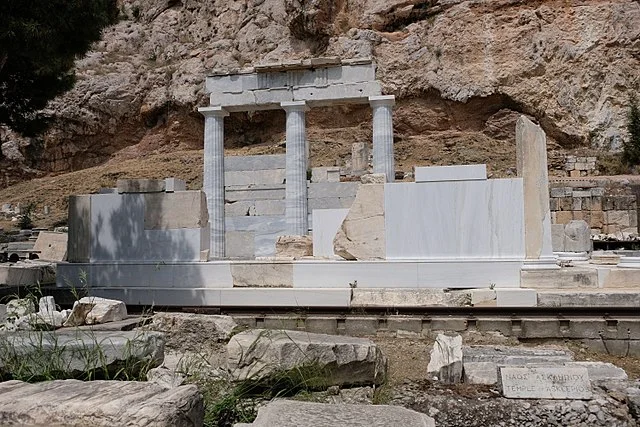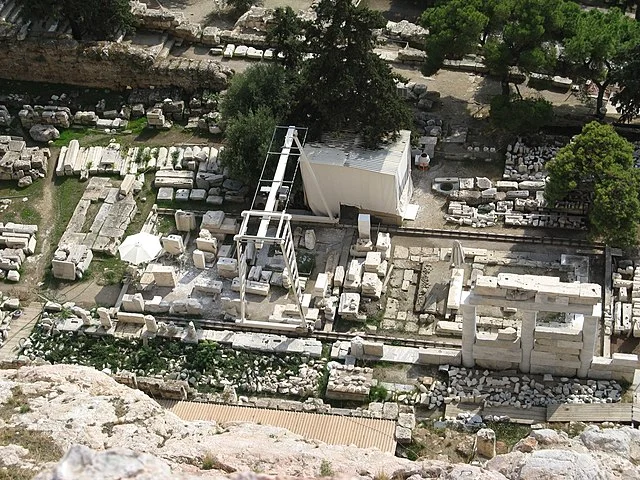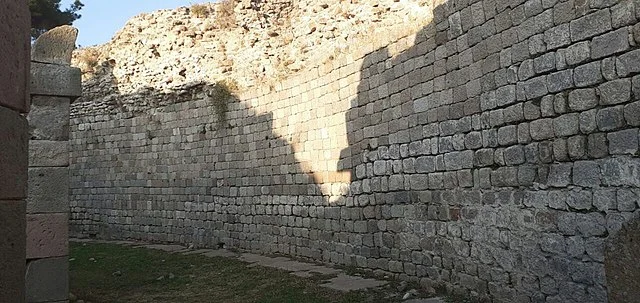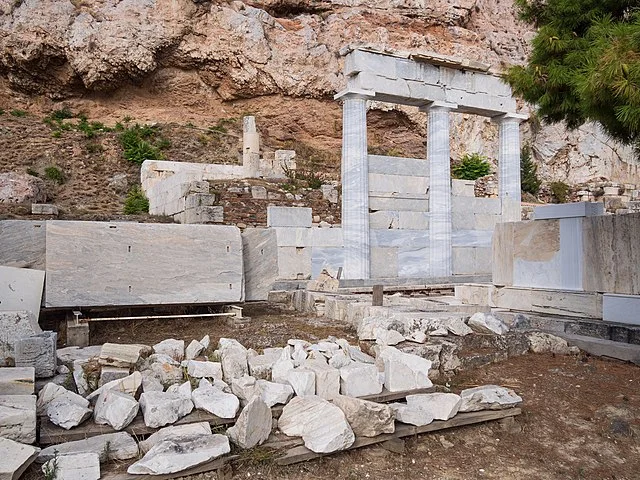The Asclepieion was a healing temple dedicated to Asclepius, the Greek god of medicine. These temples were built across ancient Greece and its colonies, serving as centers for medical treatment. Their importance grew during the 5th century BC, with famous Asclepieia in Epidaurus, Kos, and Pergamum.
Get your dose of History via Email
Origins and Spread

The cult of Asclepius originated in Thessaly, Greece. By the 6th century BC, it had spread across the Mediterranean. Asclepius was often portrayed holding a staff with a serpent, symbolizing healing. People sought treatment at Asclepieia, believing the god could heal them. The temples expanded to major cities, becoming a key part of Greek medicine and religious practice.
Structure of the Temples

Asclepieia were more than religious sites. They had facilities for healing, rest, and religious rituals. Typically, an Asclepieion featured a central temple, sacred springs, sleeping chambers (abaton), and sometimes gymnasiums. Patients participated in rituals, slept in the abaton, and awaited dreams that would reveal their cures. Priests interpreted these dreams and suggested treatments like baths, diet changes, or even surgery.
Medical Practices at Asclepieia
Healing at Asclepieia combined religious faith with medical practices. Treatments included purifications, sacrifices, and offerings to Asclepius. Physicians worked in these temples, employing techniques like herbal remedies, dietary changes, and surgical procedures. The sanctuary in Kos, particularly, became famous for its medical school, led by the renowned physician Hippocrates, who revolutionized Greek medicine in the 5th century BC.
Major Asclepieia

The Asclepieion of Epidaurus, dating from the 4th century BC, is the most famous. It was a grand complex with a large theater and healing facilities. The Asclepieion of Kos, dating from the 3rd century BC, was also significant, especially for its connections to the Hippocratic School of Medicine. The Asclepieion at Pergamum, dating to the 4th century BC, was another prominent healing center, located in Asia Minor. These sites not only attracted patients but also students of medicine.
Decline of Asclepieia

The rise of Christianity in the 4th century AD led to the decline of Asclepieia. With the growth of Christian monasteries and hospitals, these healing temples lost their religious significance. By the 6th century AD, many had fallen into disrepair or had been repurposed as Christian institutions.
Archaeological Significance

Excavations at major Asclepieia, especially Epidaurus and Kos, have uncovered impressive architecture and medical tools. These findings provide insight into ancient Greek medicine and the religious practices of the time. The remains of temples, bath complexes, and inscriptions related to healing rituals highlight the blend of faith and early medical science.
Conclusion
Asclepieia played a crucial role in ancient Greek medicine. These temples served as both religious sanctuaries and medical centers. They reflected the intersection of faith, healing, and the early development of medical science. The influence of Asclepius and these temples is still recognized in modern symbols of medicine, such as the Rod of Asclepius.
Source:

